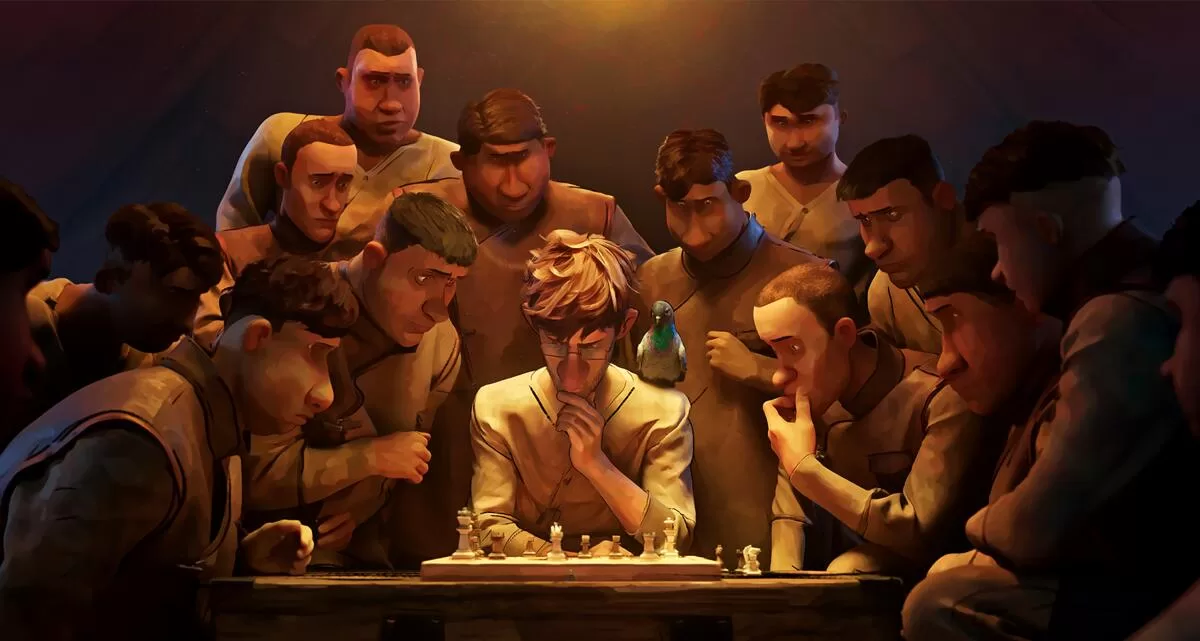‘Letter to a Pig’
In Tal Kantor’s “Letter to a Pig,” from France and Israel, an elderly Holocaust survivor visits a class of teenagers, recounting the unlikely story of a pig that saved his life. His trauma reverberates outside the classroom in unpredictable ways, leading a young girl to have an unforgettable dream. The film’s mixture of history and the surreal stems from the director’s own childhood memories.
“It was important for me to show the layers and complexity of the human soul when confronting such a profound subject matter,” Kantor says. “Thus, the cinematic and visual language of the film constantly blends realistic elements with the elusive and surreal world of memory and imagination, providing insight into the depths of human nature.”
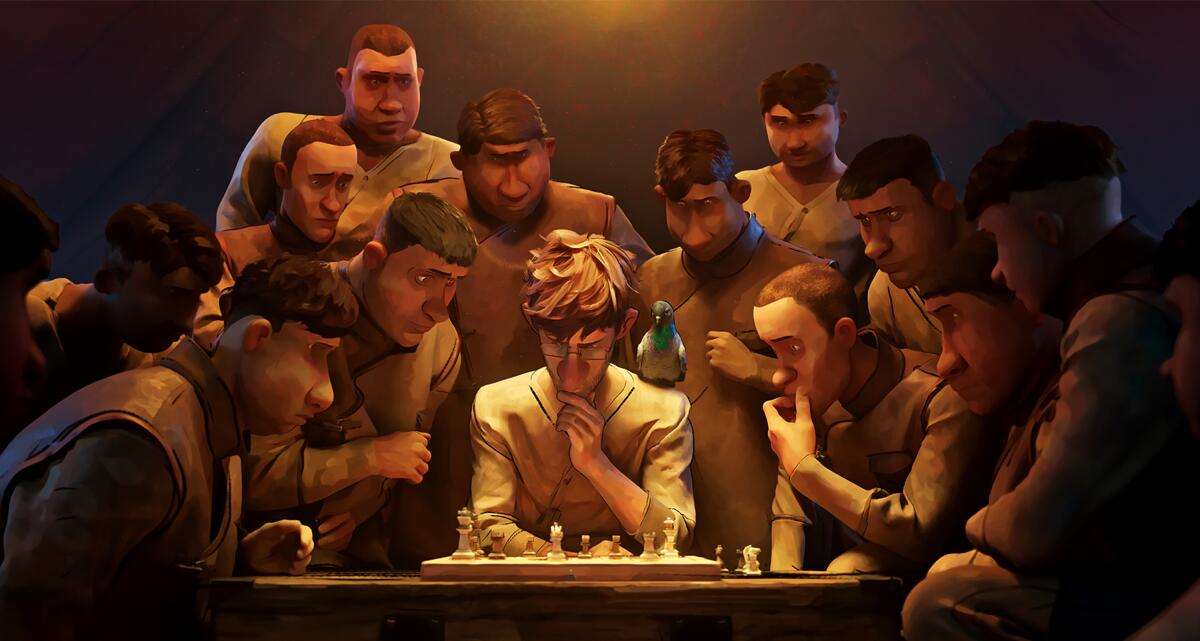
“War Is Over! Inspired by the Music of John & Yoko” shares a message of peace.
(ShortsTV)
‘War Is Over! Inspired by the Music of John & Yoko’
Taking its cues from John Lennon and Yoko Ono’s 1971 protest anthem turned holiday standard “Happy Xmas (War Is Over),” Pixar alum Dave Mullins’ 11-minute short takes place in an alternate-reality World War I, where a chess game is played across enemy lines with the help of a carrier pigeon.
The idea originated with John and Yoko’s son, Sean, and his attempts to reintroduce his parents’ message of peace to a new generation. A fortuitous introduction to Mullins led to a narrative breakthrough and took the concept well beyond a music video.
According to producer Brad Booker, “It was crucial for the audience to relate to the soldiers on either side, prompting them to say, ‘That could be me.’ By the end of the film, we aimed to transition from an ‘us vs. them’ mind-set to a collective ‘we.’”
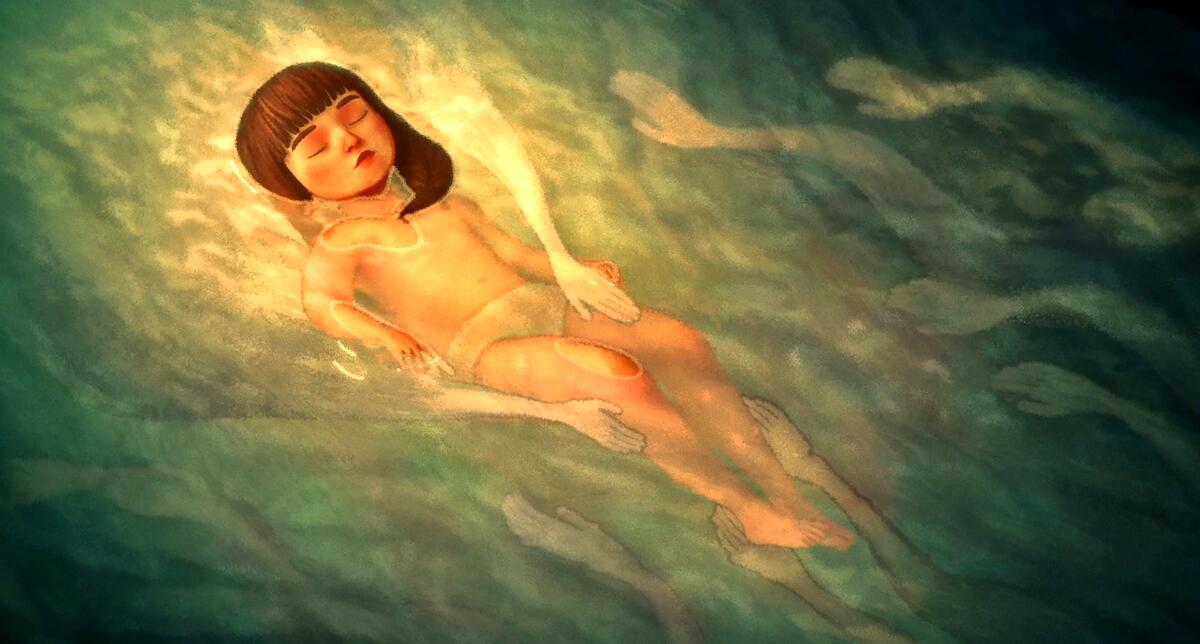
“Pachyderme” uses poetic storytelling and an evolving color palette to depict a 9-year-old girl’s alternately sweet and haunting visit to her rural grandparents.
(ShortsTV)
‘Pachyderme’
In the serene but goose-bump-inducing “Pachyderme,” French director Stéphanie Clément uses poetic storytelling and an evolving color palette to depict a 9-year-old girl’s alternately sweet and haunting visit to her rural grandparents. It’s a melancholy, understated coming-of-age story suffused with sense-memory.
The director’s composition and framing choices introduce a sense of disquiet into every image, complicating any sense of nostalgia. According to Clément, “The sky, for example, is virtually nonexistent in the film. When the sky is present, it is obstructed by an element — the grandparents’ house, a tree, etc. — to evoke the character’s lack of escape.”
Clément’s vision is also location-specific. “The south of France is the source of the vivid colors of the film: the yellow of the dry grass, the turquoise of the water, the dark green of the cypress trees and the orange-red of the tomettes, the small terra cotta tiles typical of Provençal homes. But the palette gradually evolves as the narrator’s awareness of her own story grows, ending on a pale, earthy note.”
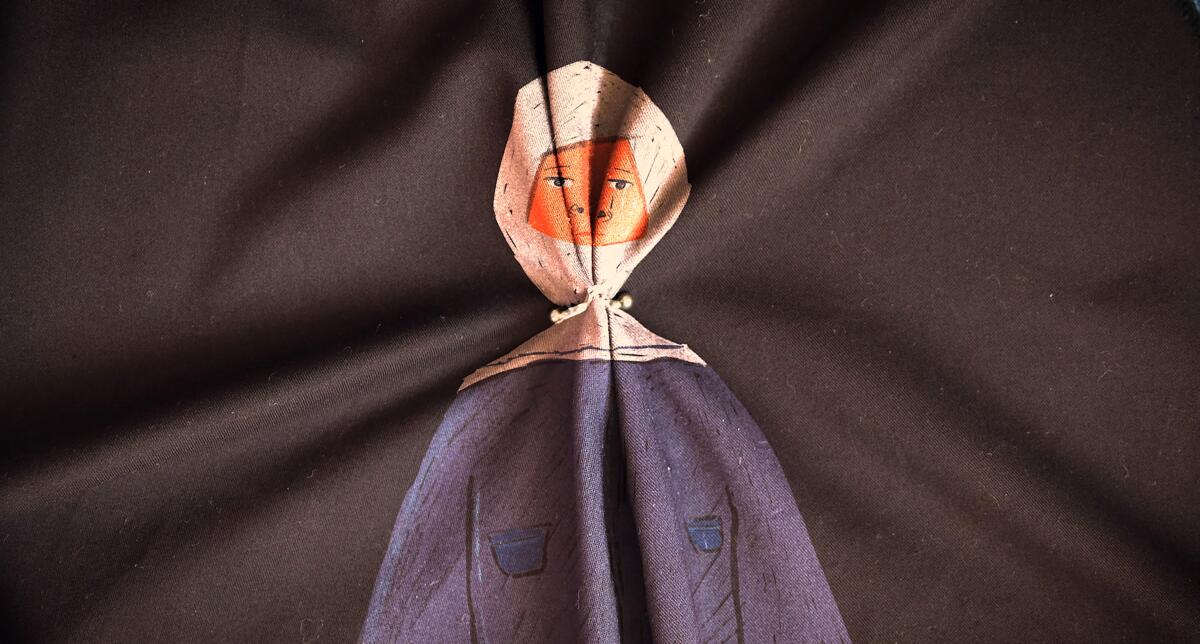
“Our Uniform” considers the layers of the hijab and the ways that a dress code both enables and disables self-expression.
(ShortsTV)
‘Our Uniform’
In the most visually distinctive short of this year’s cohort, director Yegane Moghaddam stitches her memories of school days in Iran into the fabric of a school uniform. With a playful, digressive style, Moghaddam considers the layers of the hijab and the ways that a dress code both enables and disables self-expression.
According to Moghaddam, “The images were composited on the fabric with the help of a computer,” and the process didn’t feel constraining. “Instead, I was able to discover lots of visual possibilities by combining the image and the fabric.”
“I chose to work with fabrics because I wanted to connect style and subject,” Moghaddam adds. “I believe the marriage between medium and storytelling helps communicate more easily with the audience. The more you keep your medium aligned with your story, the more coherency you’ll have in the final piece.”
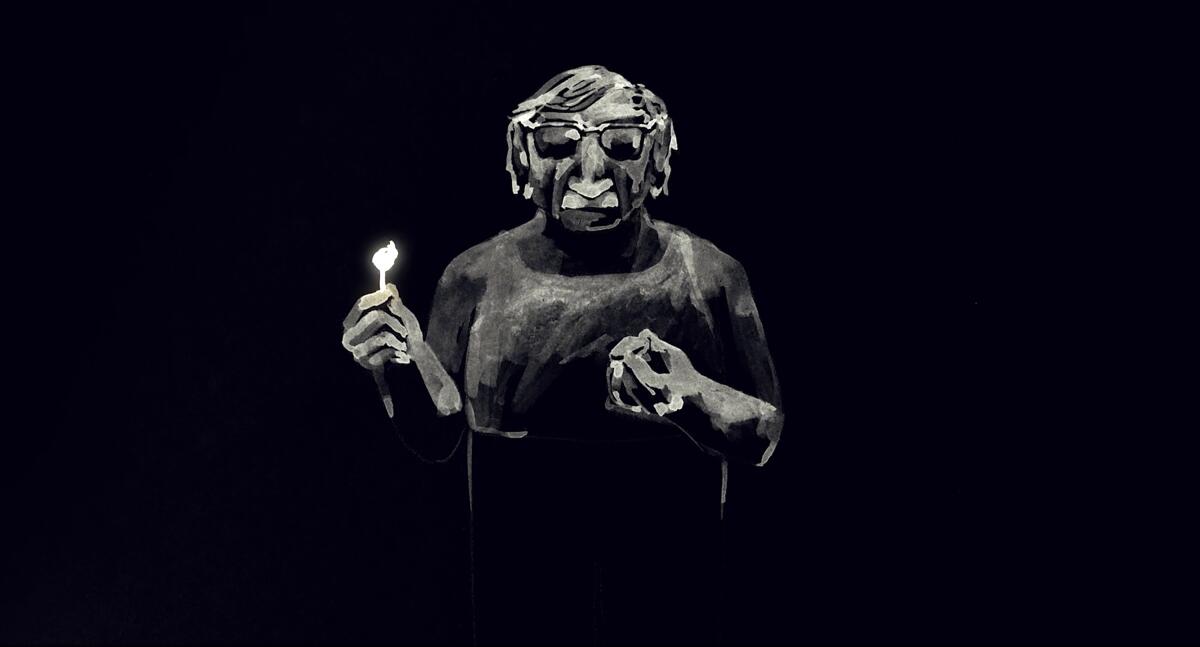
As a death row inmate bids farewell to his senses, “Ninety-Five Sense”explores an array of weighty existential questions.
(ShortsTV)
‘Ninety-Five Senses’
Directed by Jared and Jerusha Hess (“Napoleon Dynamite”) and voiced by Tim Blake Nelson, “Ninety-Five Senses” offers an ode to the human body from the perspective of a death row inmate. As its protagonist bids farewell to his senses, the film explores an array of weighty existential questions.
According to producer Miles Romney, “MAST, our nonprofit accelerator, had six animators with distinctive styles, winners of a worldwide animation contest. The purpose of the film was to highlight each style while fluidly weaving them all together, not in a visual showcase, but in a story.”
Screenwriters Chris Bowman and Hubbel Palmer took up this challenge, Romney says, and “gave the directors and our animators an incredible spectrum of emotional colors to work with.”
Romney adds that the film wouldn’t work without Nelson in the lead role. “In our character Coy, we have a folky philosophizer, someone who moves between nostalgia, regret, wistfulness, hope, resignation, in a very short space of time. It cries out for an actor with emotional and philosophical depth, whose performance is also approachable and unmistakably genuine. Who else but Tim Blake Nelson?”
